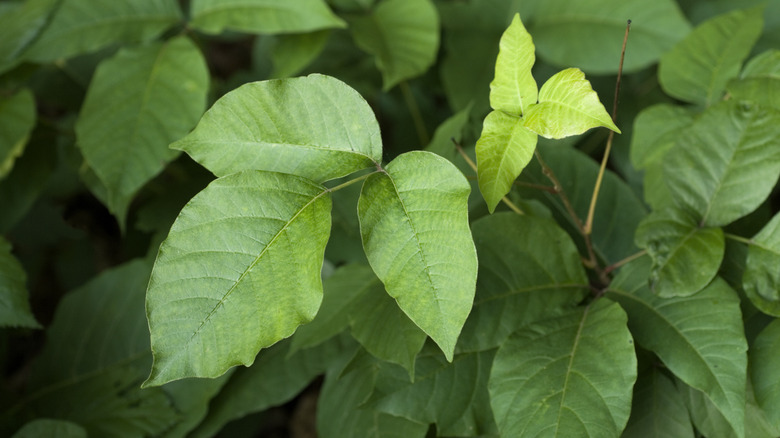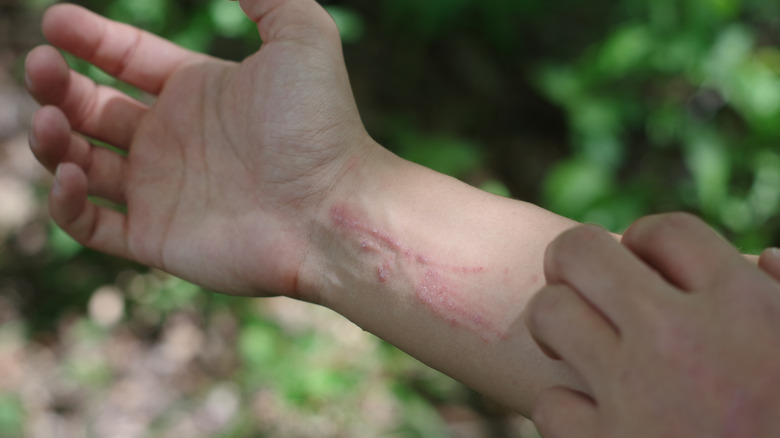The First Thing You Should Do If You Touch Poison Ivy, Oak, Or Sumac
You've probably heard the phrase "leaves of three, let it be" in reference to poison ivy, a vine with a trio of leaflets (per Purdue University). However, poison ivy isn't the only rash-inducing plant out there. Poison oak and sumac are also plants you may find out in nature that can lead to inflammation and allergic reactions. Sumac, a fragrant and flowering shrub with clusters of small red fruit, is far different in appearance than the green leaves of poison ivy and poison oak, but the rash and reaction to physical touch with the plant are still similar (via the American Academy of Dermatology Association).
The appearance of the skin will respond to all three plants as red bumps, spots, or streaks. In rare instances, black marks may appear on the skin instead of red ones, especially if poison ivy dermatitis develops. It may be popularly believed that a rash from poison ivy, poison oak, or sumac develops within short timeframes of contact with the plant, but it can take up to three weeks after interaction for a rash to appear, particularly if it's a person's first experience with one of the poisonous vines or shrubs. Whether it's your first time experiencing a plant-induced rash or you've endured the interaction many times before, the resulting symptoms can include itching so bothersome that it can actually wake you up at night, a rash that can become blisters, which burst and leak fluid, and general discomfort.
Try to prevent spreading of symptoms
Should you come into contact with poison ivy, poison oak, or sumac, the very first thing you should do is wash the area thoroughly to try to alleviate the plant's poisonous compounds from penetrating into the skin and prevent additional spreading (via American Academy of Dermatology Association). Since all three of these plants are found in nature, it's likely that you won't be next to a place with running water and soap readily on hand when contact occurs. Given this likelihood, you can use rubbing alcohol to sanitize and neutralize the area or apply specific cleanser for poison oak, poison ivy, and sumac, which comes in the forms of soap, towelettes, and cleanser. Before you go camping or on a day hike outdoors, be certain to pack some of these towelettes or keep some rubbing alcohol on hand. Dishwashing soap and laundry detergent are also effective ways to cleanse the area of contact. When you're able to reach a place with water, use cool water to rinse the area and remove residue from rubbing alcohol or any other substance used to initially cleanse the area. Always clean your hands, especially under your fingernails, once you've finished washing the affected area.
Following cleansing, the U.S. Food and Drug Administration (FDA) recommends subduing intrusive itching and other symptoms by applying a cool compress to the area, taking an oral corticosteroid, and utilizing an over-the-counter (OTC) skin product, such as topical corticosteroid, zinc product, or calamine lotion.


